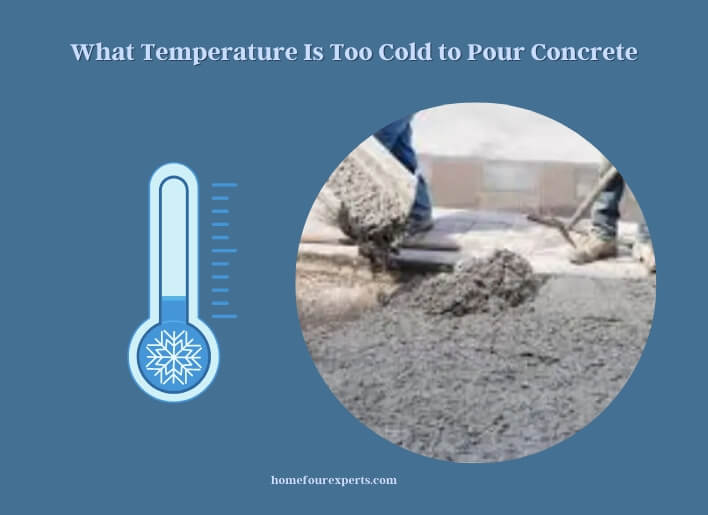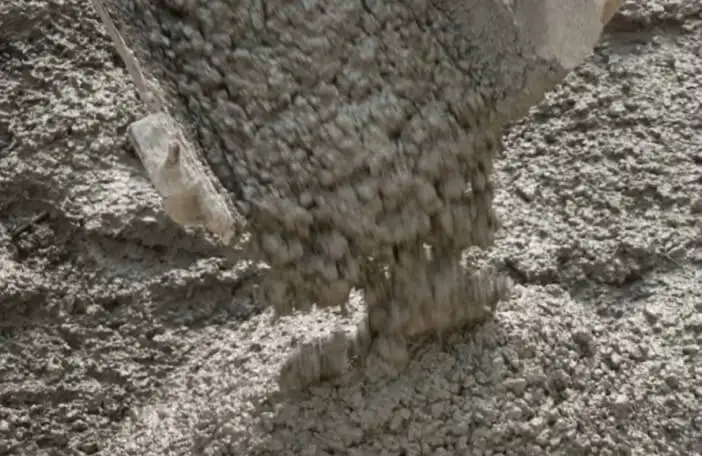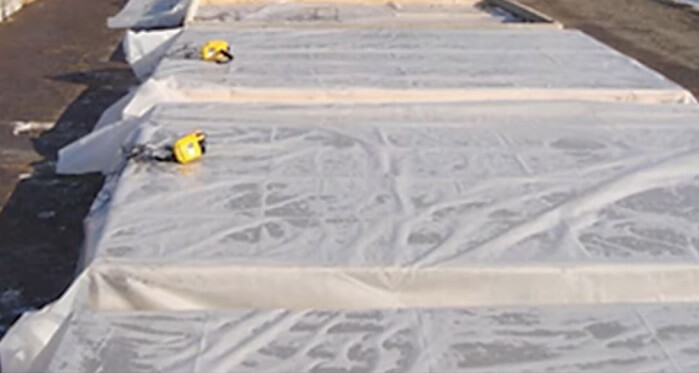Concrete doesn’t love too cold weather to work perfectly. But, construction contractors don’t stop their pouring process if the temperature can drop.
Now the question is what temperature is too cold to pour concrete.

The best temperature is between 50°F and 60°F to pour or cure it. The too cold temperature can be 40°F, 30°F, 20°F, 10°F, or low. In this condition, the concrete can freeze quickly and less its strength to pour.
You have taken some proper precautions to pour concrete in the winter. Protect against freezing to cover the concrete with blankets. Or, maintain the sub-base from ice. Or, include hot water to warm the concrete.
Anyway, this short description is not sufficient to understand the overall story. So, read the full explanation. We arrange this topic including some important questions and answers along with the FAQs section on behalf of you. Read also: Can You Sand Concrete? How to Sand It Sander/Grinder or by Hand
Does Temperature Affect Concrete Pouring?
Concrete pouring is the process of a chemical reaction. When you put the water on the cement fraction of the concrete, this process starts.
There is no need for sunlight or hot temperature to cure or fix the concrete. The concrete can evaporate quickly just because of the too hot weather. Pour concrete too hot? You must replace it.
Alternatively, too cold temperature is harmful and a lengthy process of curing or pouring the concrete. The freezing climate plays a vital role in this installation. Due to this condition, your concrete can be brittle and never be set up and poured. If you want to pour concrete in freezing conditions, you will do this job again which means repoured it. So, the correct temperature is best to cure the concrete underwater.

What Is the Best Temperature to Pour Concrete?
Now, we discuss the exact temperature that is best for pouring concrete. The ideal range of the temperature is from 10˚C to 15˚ C. That means 50˚F to 60˚F. At this temperature, the necessary chemical reactions are set properly.
Between 40/50°F and 60°F lets water properly evaporate. If the temperature is below 40°F, the chemical process of curing slows down significantly.
What Temperature Is Too Cold to Pour Concrete
If the temperature drops below freezing, it is too cold to pour concrete. You have to stop working because the strengthening and setting stop. The concrete doesn’t provide satisfactory strength in too cold conditions.
It will lose the potential strength while staying poured concrete freezes the whole day. This losing strength can be 50% or more depending on the duration of freezes. Concrete can crack in freezing temperatures.
Still, you can continue pouring concrete by taking some protection from cold weather defects. Relevant Resources: Who Makes the Best Concrete Chainsaw?
Things to Consider with Cold Weather Concrete Pouring
Construction doesn’t stop in the cold weather or too cold temperatures. Although winter concrete projects are quite challenging.
Before starting the concrete project, you have to consider any special strength to protect your pouring concrete. We provide here some common and important considerations.
You can apply any strategy to keeping your surroundings as well as materials warm. The following strategies are below to ensure your concrete is protected.
- Utilize products designed to set quickly during cold weather. Because most of the products don’t set as fast as cold temperatures. Modern materials are set faster than traditional ones.
- It is necessary to use heaters for warm frozen ground, ice, or snow. Also, heated each enclosure that is waterproof and windproof for protecting concrete in winter.
- Select dry and warm materials to keep them warm and go to a dry location.
- Always use hot water mixture cement.
- You can use additives that will accelerate the set time. Check out the additives that don’t contain calcium chloride or any rebar or metal wire mesh in the concrete. If additives contain these, you should avoid them. These additives are harmful to the concrete.
- Can use surplus cement to create the chemical reaction hotter. And, cause concrete to hydrate besides quickly.
- Don’t forget to wait until the bleed water evaporates. The normal temperature is good to bleed water quickly. But, bleeding can begin later and take longer in the too cold weather. Use a vacuum or squeegees to mix water fast.

Avoid When Working With Concrete in the Winter
When working or pouring concrete in winter, you have to avoid some things. A minimum 10°C temperature is compulsory for pure concrete. The temperature reduces in the winter. Sometimes it can be -4°C that freezes concrete.
To avoid this too cold condition, you use a heater to keep concrete warm during the winter season. This is the first important work. You May Also Like: Concrete Cutting Saws for Smooth and Accurate Cuts
Second, in the winter, your concrete ground can freeze quickly. You should avoid pouring concrete on the frozen ground. It can crack your concrete. The heater is the best solution to keep warm up the frozen ground. Another way is to use black plastic or concrete blankets on the ground before pouring.
Third, you have to avoid traditional tools and cold tools to work in the winter. Warm use tools. The most common concrete tools are concrete float, shovel, screed, compactor, trowel, circular saw, chainsaw, hammer, and other concrete cutting saws.
Fourth, don’t remove formwork if your concrete has no desired strength due to more cold weather. Too cold concrete can collapse. You must check the concrete temperature regularly to prevent ice.
Fifth, you have to ignore sealing the concrete until it has fully poured. If the temperature is below 10°C, you can seal it.
Will Concrete Pour AT 30°F
Yes, it is possible to pour the concrete at 30°F temperature although this is the freezing point and concrete requires help to do this properly. Remember, when the air temperature is from 30 to 40 degrees, you have to ensure that your mixed concrete will maintain a temperature of 55 to 60 degrees.
Here is a chart of how long concrete needs to pour at different temperatures.
| Temperature Above Freezing | Approx Setting Time of Pouring |
| 100°F (38°C) | 1-⅔ Hours |
| 90 °F (32°C) | 2-⅔ Hours |
| 80°F (27°C) | 4 Hours |
| 70°F (21°C) | 6 Hours |
| 60°F (16°C) | 8 Hours |
| 50°F (10°C | 11 Hours |
| 40°F (4°C) | 14 Hours |
These setting times can be changed somehow. Concrete takes more time if the temperature drops. You can cover your concrete and cover space by using blankets or heater ground. After heating, it will reach its full strength. And, you complete your work. Perhaps you know or don’t know pouring concrete is better than others. The Americandry shares the reasons why it is better.
FAQs
Can You Pour Concrete if It Freezes at Night?
No, it is not possible to pour concrete that freezes overnight or for 24 hours. Don’t leave it on frozen ground, snow, or ice. You can use thermal blankets to prevent cement frost from forming.
2. Is It Okay to Pour Concrete in Cold Weather?
Concrete sets and forms best from 50 to 60 degrees Fahrenheit. In the cold weather, that means the temperature drops below 40°F, and your concrete reduces strength. So, the chemical reactions slow down.
3. How Long Does Concrete Take to Cure in Cold weather?
If you cure the concrete at an ideal temperature between 50°F and 60°F, you should take a time of 48 hours. This is enough to concrete reach optimal strength to set up. In the cold weather, concrete takes more than 48 hours to cure.
The Bottom Line
It is time to say goodbye to the topic of what temperature is too cold to pour concrete. Under 40°F temperature does freeze the concrete and hampers your construction project. So, it is better to take some protection to start your upcoming winter project or pour concrete.
You have known all of the necessary data and feel better while concrete pouring in the winter. We are not waiting for your upcoming winter construction.
Best of luck!
Read more: Outdoor vs Indoor Tiles: What is the Difference?
About This Writer

Hi, I am Eric Devin and I am a professional interior architect. Since childhood, I've always enjoyed DIY projects! And, I have loved to solve simple household problems using essential tools and equipment. I have also acquired a lot of information about basic household tools settings by working with contractors.